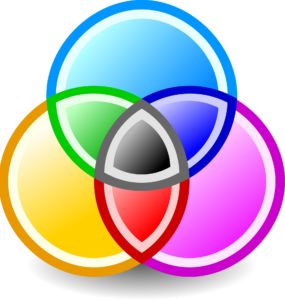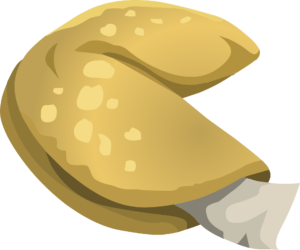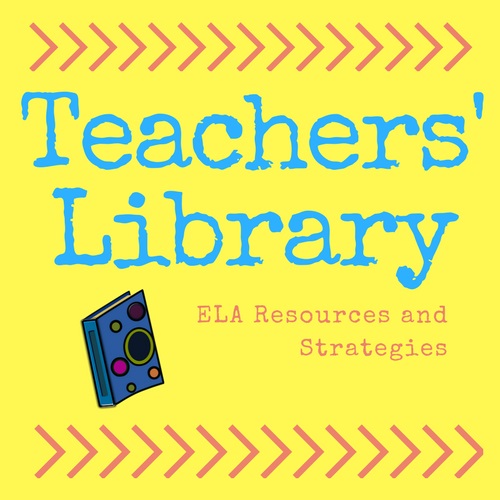Formative assessment, or as my British teacher friends say, AFL, is paramount for staying informed about student learning and progress in order to direct and inform your practice. It’s also necessary for students to have strategies to be reflective of their own learning accomplishments in order to set informed goals for themselves. So yeah, we know it’s important, but that doesn’t keep some of our strategies from getting stale.
Below are some strategies that I’ve found effective, so please peruse and use!
1. Thumbs up, thumbs down
When explaining a new concept, I find that when I ask if students understand, I can get the vast spectrum of vacant stares to noncommittal shrugs and nods. The earlier in the morning, the more passive the teenagers. I get much more honest feedback by requiring students give a thumbs up when they totally get it, thumbs to the side if they are on their way to understanding, and a thumbs down if they are totally lost. I even have students switching back and forth between down and sideways, or sideways and up. Small victory, but this is demonstrable reflection, and I find I get very honest and immediate feedback of my direct instruction this way.
2. Exit tickets
A few of the items on this list can serve as exit tickets, but the basic idea is the students demonstrate some form of their understanding in order to leave the room. This can be in the form of comprehension questions, a summary, an opinionated reaction, a drawing, a mini-matching quiz, a fill in graphic organizer, you get the picture.
3. “Use me in a sentence” cards
These are my favorite! These are super effective for taciturn or self effacing students who are reluctant to participate in discussion. I pass out between 1-3 cards per pupil on their way in the door. Each card has a word or phase on it that the student must use in a sentence before the end of the lesson, so it’s basically a verbal exit ticket. Sometimes I will have the students pick one vocabulary card and another card that is either labeled “sentence” or “question.” This tends to facilitate discussion as most students wait util the end of the lesson to start using their cards, so it encourages student participation at the same time in the lesson. Here are some to go with most literature discussions.
4. Make me a metaphor
This can be done individually, in pairs, on the board, on sticky notes or on flipchart paper around the room allowing students to move around. Students are given a vocabulary word(s) or author or concept, etc and they must write a metaphor. This is a great way to encourage students to be poetic without the pressure that writing poetry often brings. I love to do this in small groups where students write a collaborative poem with their metaphors. They must decide on the order and then give a relevant title.
5. Venn diagram
Comparing and contrasting is an essential skill students must develop across the curriculum. It forces them to think more deeply about concepts after they understand the definition.
6. Pro and con list
Very similar to a Venn diagram, yet this list can get students thinking about the implications of what they are learning. It’s also a great way for students to prepare for a longer writing task or a debate.
7. K-W-L
The old Know, Want to Know, and Learned chart. These charts are great pre-assessment tools to inform you of what students know and any misconceptions. I also love that we go back to them at the end of the lesson or unit to check our improvement. Here is an example to go with most topics.
8. Think-pair-share
Give students a time limit to think about an idea or concept, next discuss is with a partner, and then share out with the class. I find that TPS works best when pairs or groups know they will be responsible for contributing something to discussion. Which bring me to…
9. Popsicle stick cold call
I love this one! I have popsicle sticks with each student’s name on one. This takes the subjectivity out of cold calling. Plus, you can put the stick back in again to keep students on their toes. If you use a shallower coffee can, you can see more of the students’ names before you pick, which gives you more control leveling questions for students of different abilities while maintaining a facade of complete objectivity!
10. Adjective race
Give a time limit and students have to list as many relevant adjectives about a topic, author, book, character, etc.
11. Connotation groups
This activity works best when students have a longer vocabulary list to learn. Print out the words and cut them up so each group or pair has all the words. Then have students group the words by connotation. You can give them the connotations, such as love, danger, nature, etc. or they can justify their own designated connotation groups. I usually give students a few minutes to group the words and then give them all new groups to sort.
12. Find your match
Pass out post it notes or index cards with a word or poem on it. Tell them that someone else in the class has the definition or the author and they need to find their match as quickly as possible. This goes rather quickly, so I like to do a few rounds of it.
13. Habits check
It’s imperative to give students the time to be reflective about their own learning and habits. Toward the end of a learning segment, have students assess their habits and behavior. Encourage them to make co
nnections between their learning habits and their progress.
14. Post-it note feedback
This is a great way for students to give honest, anonymous feedback. Post it notes are great for grouping and re-
grouping answers.
15. Fact vs. inference chart
This works best by using a picture the first time, especially a provocative one that gets a reaction. In the left column, students write objective observations about the picture and on the right side they must make an inference. Or you could require they write down their inferences first and then they must provide a fast to support the inference.
16. Quick writes journal
There is increasing evidence that unstructured writing prompts are ineffective for improving writing skills in secondary students, especially reluctant writers. So journal entries should require students think critically about a prompt, rather than merely asking students to react to what they have read.
17. White board Jeopardy!
If you don’t have mini white boards, you can laminate some pieces of plain printer paper, or pastel colored paper to indicate groups. My favorite Jeopardy template is wwww.jeopardylabs.com as it’s free and each group gets to participate with each question. Two downsides: You cannot name the groups (so you have to remember which number is for which group), and you must change the score for each question in order for t
he clue to disappear. This means you may have to add points to a group and take them away.
18. Roll the dice
To literally shake things up! On the board, indicate which task responds to what number on the die. For example,
1 = draw a picture 2 = give a synonym 3 = give an antonym
4 = act it out 5 = use it in a sentence 6 = give an example

This activity works great for analyzing different aspects of a character, practicing literary devices, and creative writing.
19. Spin the wheel
This is essentially the same as the dice activity, but incorporates crafts. Students can make their own spinners or you can make a really huge one!
20. I know, I think, I wonder
Have students identify one thing they know at the end of a lesson, one thing they now think, and something that they now wonder.
21. What’s the question?
Give an answer such as “Shakespeare” or “zombies” or “adjectives” and each student come up with a question.
22. Predict and explain
Have students stop at pivotal points in a text to make predictions about what will happen next. The explain part is just as important. Require that students, in either speech or writing, justify why they think something will happen. Even better is they provide textual evidence to support their answer.
23. What does the text say?
A two-column graphic organizer requires students interpret textual evidence and draw inferences. You can give them a structured reading task to analyse character development, predict and explain (see above), or to identify motifs or the main theme of a text. Here is a very general handout that can be used with any text.
24. Two truths and a lie
This can be a teacher or student led activity. Provide two truths and one lie about what you are teaching and see if students can determine fact from fiction.
25. Literary postcards
These are great students inside the heads of literary characters and writing from different perspectives. Have students write quick postcards from one character to another. Then they get to illustrate the front!
26. ABC’s
This is a fun whole class activity, because it can get really tricky. Start with the letter A and determine a word that is connected with the concept your teaching or discussing. Then move around to B, C, D, etc. I put the entire class in a circle, and we go around and if someone gets stuck, they’re out. The winner (s) make it to the end of the alphabet (or usually to X).
27. Collaborative summary
Put students into groups of 4-6. It’s best of there are as many students as sentences for a paragraph. The first student write the topic sentence, then passes the paper to the next student who writes the first supporting sentence and so-on. This is a silent activity, but it’s fun if they read over each other’s shoulders and try to improve their paragraph through non-verbal communication. It encourages each student to think more deeply about their role (basically the role of an individual sentence in a paragraph) and add transition words and make sure pronouns correspond correctly.
28. Line graph of progress
I know, this can rely on summative assessments to give data, but it’s a great way to keep students involved in tracking their progress and it’s also cross-curricular. If you do anything week to week, such as vocab quizzes or reading comprehension. Have students look at peaks and troughs and interpret their data so they can celebrate and create…
29. Achievements and goals
Have students think back over their progress in a unit or term and ask them to reflect on what went well. What did they learn or improve on? What progress do they still need to make? Have students set specific goals that will help them make this progress. Better yet have them create SMART goals!
3o. Metacognition
This worksheet is a great way to stay informed about whether your students know what they’re learning, but also why they’re learning it. Here is a general handout that can be used with just about any topic or lesson.

